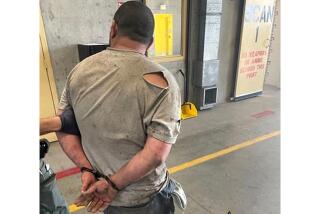TUSTIN, ORANGE : Cat Killings in Area Rise to 75 This Year
Cat killings in Tustin, North Tustin, Orange and Villa Park have increased dramatically in the last few months, climbing from zero in May to 25 last month.
County animal control officials say the blame lies with coyotes, which are training their pups to hunt by feeding on pets left outside.
But Janet Hampson, a North Tustin woman who has made a full-time job of studying the cat killings, thinks many have been killed by humans. Members of Tustin Residents Against Animal Killers and other volunteers plan to pass out more than 3,000 flyers between now and Halloween urging residents to keep a closer watch on their pets.
The controversy over what had killed 67 cats over two months in 1989 prompted county officials to call for a federal investigation. The USDA Animal Damage Control Department concluded that coyotes were responsible.
After that determination, county officials launched a public awareness campaign, urging people to keep pets inside, cover trash and not leave pet food outside. Hampson’s group, Tustin Residents Against Animal Killers, began patrolling at night.
The killing subsided for seven or eight months but then started again, with twice as many cats killed this September as last September in Tustin, unincorporated North Tustin, Orange and Villa Park.
In the past four months, 69 cat killings were reported to county animal control officials in the Tustin/Orange area. So far this year, 75 cat killings have been reported in that area, contrasted with 38 in the rest of the county.
Animal control officials said examinations of all the cat carcasses indicate that coyotes are responsible for the recent killings, but Hampson and some other experts disagree.
James Connoyer, a veterinarian who examined about 40 cat carcasses last year and one more recently, said coyotes are not clean enough to leave the carcasses as they have been found.
The carcasses are often left in the middle of lawns neatly cut in half with organs off to the side or just a head and paws laid out symmetrically.
Kevin Whelan, chief of field services for the county Animal Control Department, said that people don’t always understand what coyote markings can look like. Cuts may appear to be clean and neat but often there are teeth marks underneath the skin, he said.
And while Hampson finds the fact that the cats are often found in the middle of a lawn unusual, Whelan said coyotes don’t carry their prey off to a den as is commonly assumed.
The patterns formed by intestines and organs can be explained by juveniles coming along after a coyote has killed a pet and arranging the remaining parts as a prank, Whelan said.
Although there is disagreement about the cause of the cat killings, Hampson and county animal-control officials agree that people should keep their pets inside.
In addition, members of the Tustin residents’ group have been collecting signatures on a petition asking the County Board of Supervisors to set up a special task force to investigate the killings. Hampson said she expects to present more than 6,000 signatures to the board in a few weeks along with a lengthy report on the cat killings.
More to Read
Sign up for Essential California
The most important California stories and recommendations in your inbox every morning.
You may occasionally receive promotional content from the Los Angeles Times.










